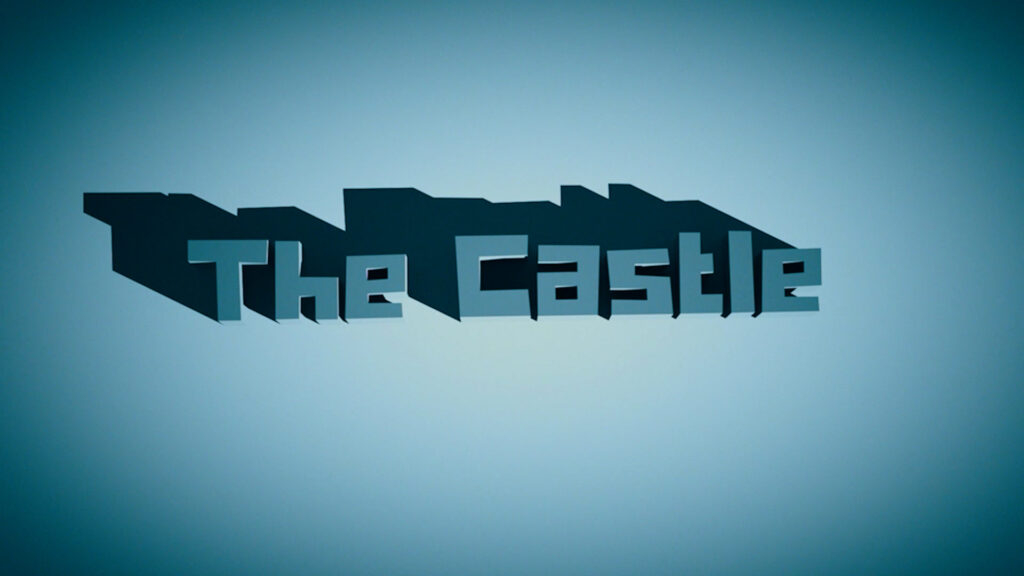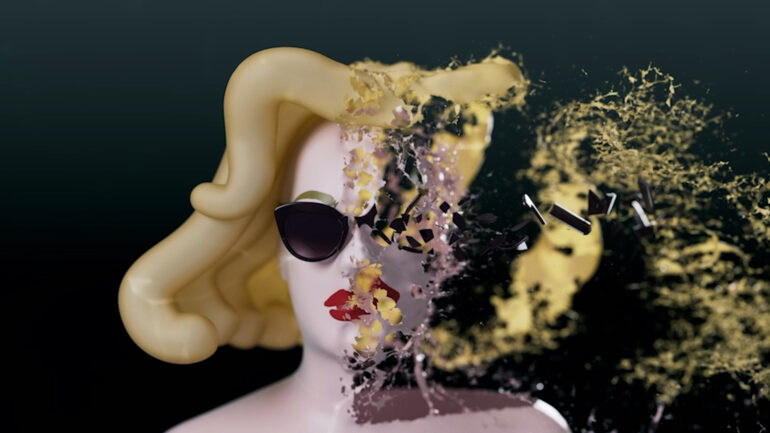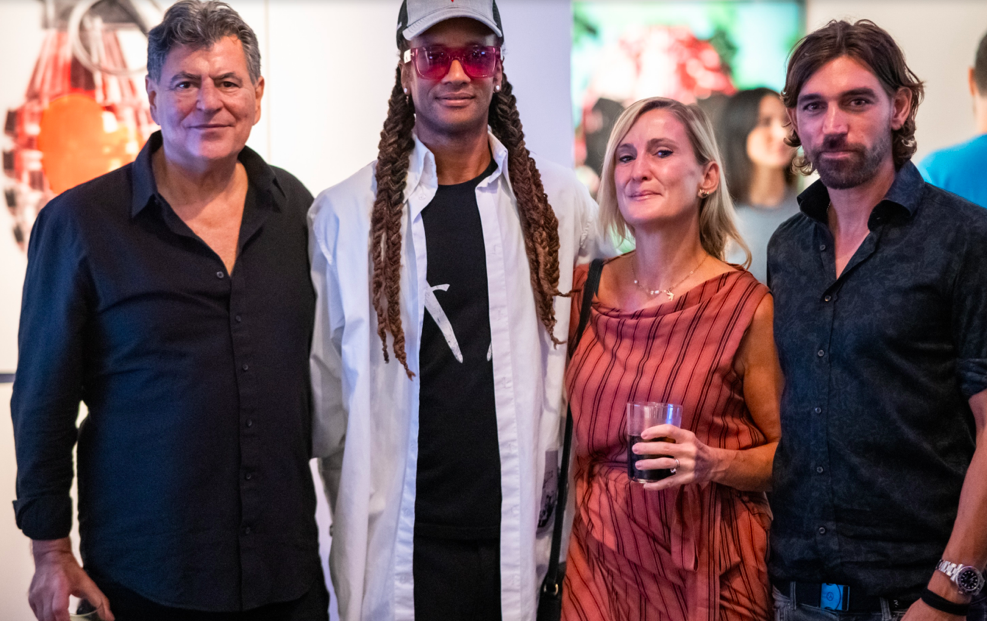From Pop Art Icon to Filmmaker, Pandemonia the enigmatic London-based artist renowned for her towering seven-foot latex persona, has long captivated the art and fashion worlds with her post-Pop Art critique of celebrity culture and femininity. Since her debut in 2009, she has become a fixture at major fashion events and campaigns, including a notable collaboration with Camper in 2016.
Now, Pandemonia is venturing into filmmaking with her directorial debut, The Castle. This experimental short film is described as a “Surrealist fashion film” and its narrative merges elements of fantasy, fashion and Sci-Fi.
The film premiered at ASVOFF16–the fashion film festival founded by Diane Pernet– where it won an award for Best Editing. The Castle’s fusion of narrative with surrealism and pop art aesthetics exemplifies Pandemonia’s ability to blend art, fashion, and film, continuing her exploration of identity and media representation.
As she adds filmmaking to her genre-redefining living art persona and art making, Pandemonia’s artistic journey continues to evolve, challenging audiences to reconsider the boundaries between art forms and the personas we construct in the public eye. Pandemonia’s multi-disciplinary oeuvre pushes the boundaries of contemporary art, and The Castle it’s a continuation of her dialogue with the media and fashion worlds.
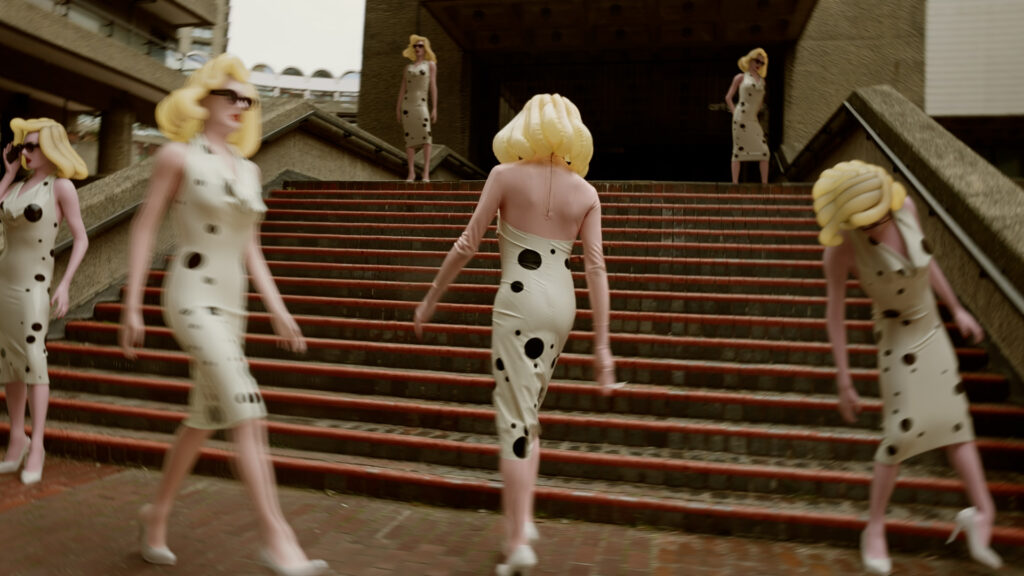
Culturalee spoke to Pandemonia about becoming a living Pop Art Icon and her award-winning foray into film directing with post-Pop Art short film The Castle.
Pandemonia was created in the mid 2000s. What was the starting point for Panda, were you inspired by cartoons such as Jessica Rabbit and airbrushed supermodel magazine covers?
Pandemonia was born out of frustration with the overwhelming presence of celebrity culture, especially in free newspapers on the London Underground. As social media emerged, I felt artists weren’t exploring the new terrain of fame and media. While airbrushed supermodels and exaggerated femininity influenced my visuals, my focus was on critiquing the inflated world of celebrity and consumerism.
I was also inspired by an image of the Makishi tribe from 1936, particularly their use of sympathetic magic—where objects like animal skins were believed to transfer power. I wanted to create a Western pop version of this, a modern primitivism, and perform it in front of the public. I drew from advertising imagery, incorporating female tropes and using latex for its connection to the Freudian sex drive. By merging these elements, I aimed to reverse the male gaze and critique consumerist fantasies, becoming both a participant in and a critique of pop culture.
You make all your own clothes and often carry a matching Scottie dog. Where do you get inspiration from for your different looks?
I draw inspiration from everyday life, using whatever influences me in the moment. Vintage Hollywood films have been a big influence, as that era is still the foundation of modern Western culture. Pop artists in the sixties recognised Hollywood’s impact, and I’ve taken that and inflated it—using the balloon as an allegory for pop culture. Since performing Pandemonia, I’ve seen many fashion shows, so new influences naturally come in, but I keep my designs grounded. I avoid making them too outlandish, as that could shift them from being meaningful expressions into mere spectacle, losing connection to the core themes in my work. My matching Scottie dog, like my clothes, is a personal touch that keeps everything cohesive and playful.

The contemporary art world has recently started to celebrate icons of club culture and fashion icons, for example with the Leigh Bowery retrospective at Tate Modern and the ‘Outlaws: Fashion Renegades of 80s London’ exhibition at the Fashion & Textile Museum. Was the character of Pandamonia inspired by Leigh Bowery or any of the characters at 80s club Taboo? And do you think London now is experiencing an art and clubbing scene as vibrant as that of the 80s?
I have to admit, I wasn’t directly influenced by Leigh Bowery, though I can see why that assumption might be made. Part of creating Pandemonia was about performing it in front of a raw, public crowd, not within the confines of a gallery. I wanted the public to experience my work, but the downside is that it can be interpreted in ways I can’t control. Pandemonia rarely appears in clubs because the location impacts its meaning, and I prefer to maintain that framing.
As for London’s current art and clubbing scene, I’m not entirely sure. I suspect it was more vibrant in the 80s, especially since so many clubs have closed in the past decade. Space is limited, and clubs are disappearing. It’s unfortunate, because art and clubs contribute a unique vibrancy and creativity to a city that can’t always be financially measured.
You’ve become something of a celebrity, walking John Paul Gaultier’s catwalk and sitting front row at fashion shows. Were you surprised by the reaction to Pandemonia by the press and public?
When I first started, I had no idea how people would respond. I’d never even been to a fashion show before. I stepped out of the taxi, and suddenly, there were flashes from cameras all around me. The show’s PR team immediately placed me in the front row. It took a lot of courage, but if I had backed away from the idea, I would have never forgiven myself. When Jean Paul Gaultier approached me about making something for his final couture show in Paris, it was the ultimate compliment. He completely understood the playful and creative essence of my ideas. Although I was initially fairly clueless about fashion, I was in awe of his show and immediately recognised so much of his work. Jean Paul’s creations went far beyond the world of fashion; they truly resonated within popular culture.
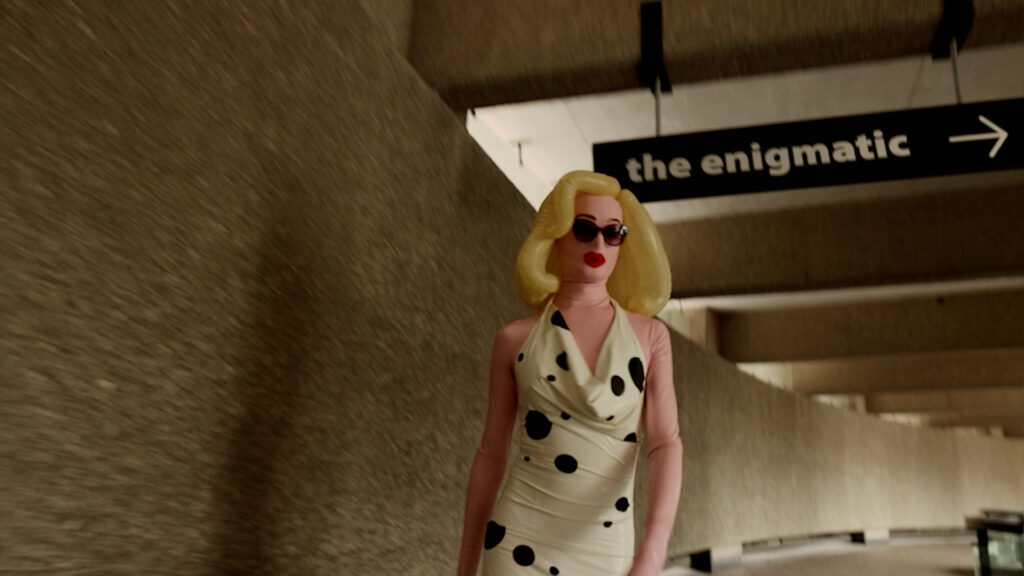
You recently wrote, directed and starred in a short film called ’The Castle’ which won an award in Paris. It’s your directorial debut and features a sort of King Kong size version of Pandemonia in an AI urban setting. Can you give a bit of insight into the inspiration behind ’The Castle’ and the narrative?
The film came about from a possibly misguided boast.
We were filming a for Tim Yips Love infinity and I felt it didn’t really capture what Pandemonia was about. Tims style is very much handheld camera stream of consciousness. I boldly boasted if he gave me some footage I could make a film out of it. He gave me some B-Roll footage and of cause there was no audio or narrative. I had to deliver my end of the bargain.
The inspiration for my film The Castle was taken from me trying to find a thread to Tims B-Roll footage. I had to approach it with no preconceived ideas. I used a William burrows cut up Rorschach technique and literally wrote down the first thing that came to mind. As Pandemonia’s lips don’t notability move and there was no audio in the film I decided to make my weaknesses my strengths and use Voice Over narration as a method to tell the story like in the old Hollywood film Double Indemnity.
Most of the footage would not edit together and there was not much to use in the first place so I had to resort to using a lot of CG, Computer graphics to reconstruct every shot and invent new scenes. I am very hands on in all my work and this led to new ideas that affected the narrative. Again as in the audio the problems became the strengths. I started unfolding perspective as a way to rebuild the 3d scene and this visual idea directly lead into the audio narrative. I started talking about perspective and consciousness. There was not enough Pandemonia in the film so I created 3d animated versions of Pandemonia and animated them and whilst doing this this it reminded me of Walt Whitman’s poem Song of myself and I made literary joke and included the line I come in multiples.
Many of the ideas in the narrative were drawn from memories of books I had read, often imperfect or incorrect recollections. For instance, following your thread section was from Hero with a Thousand Faces literally trying to find a way through the labyrinth of film footage. Hermen Melvil’s Moby Dick at some parts is sort of the story ark. The Pequod became The Castle and gets destroyed at the end. Like Ishmael, Pandemonia survives to tell the tail… “leaving me to wander—a solitary figure in the vast expanse where the past dissolves like mist and the future looms, an unknown horizon….”
Tim Yip Co-Directed ’The Castle’ and you starred in his film ‘Love Infinity’ which premiered at the National Gallery in London a couple of years ago. What is Tim like to collaborate with creatively?
Collaborating with Tim is an interesting challenge. I find him difficult to fully understand at times, so I chose to focus on making something meaningful out of whatever he gave me. With The Castle, it felt like I was responding to his chaos—whether it was the language barrier, cultural differences, or the non-sequential footage. Everything seemed random, but I stayed open-minded and embraced the unpredictability. I went on a journey, navigating through it all, which kept the process fresh and allowed me to explore new creative directions. When I finished the film and showed it to him, he said it was great. Maybe that was his intention all along, and in the end, we ended up understanding each other perfectly.
Follow Pandemonia here.
